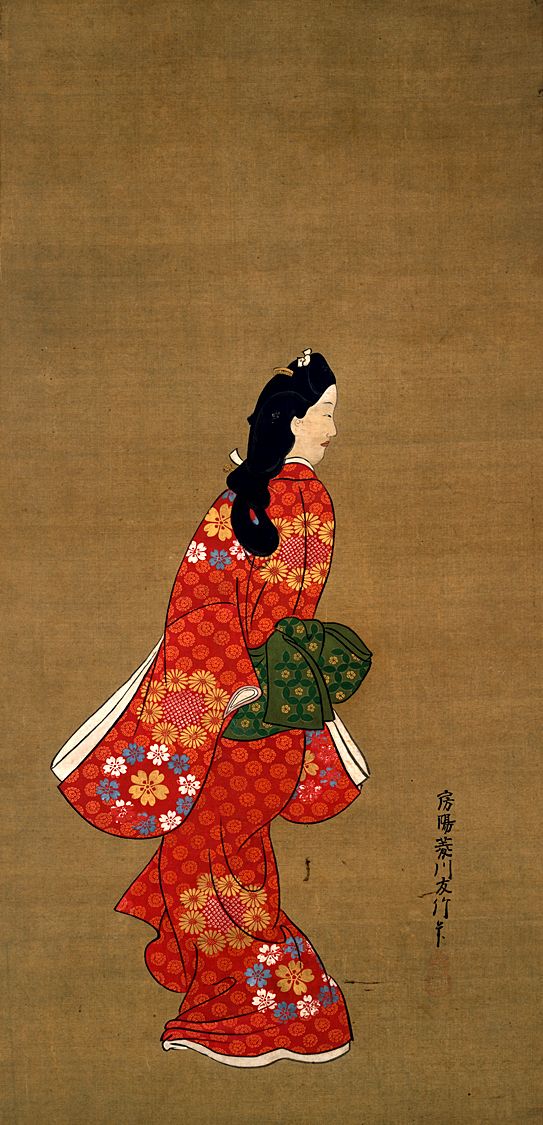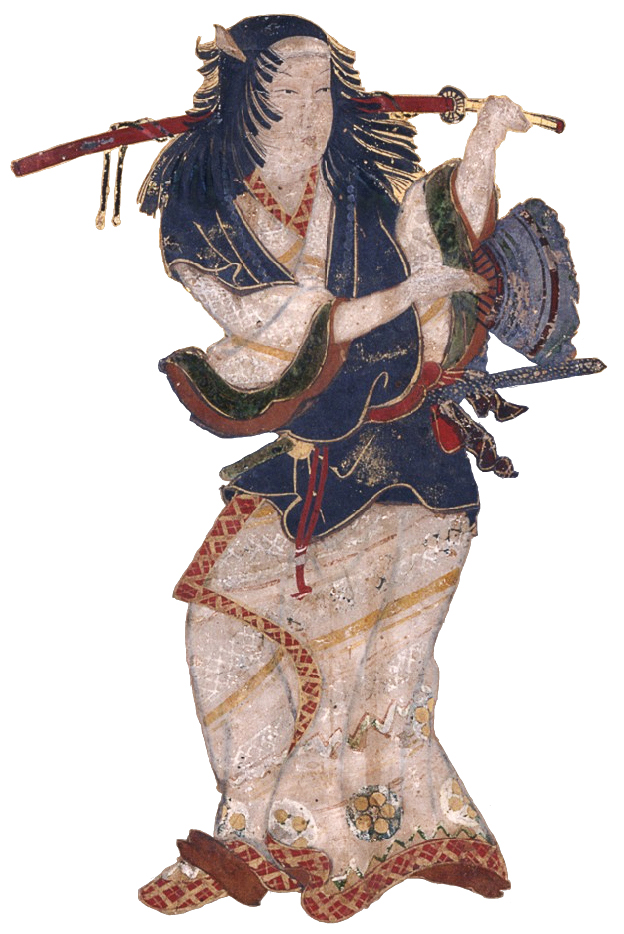|
Sharaku
was a Japanese ukiyo-e print designer, known for his portraits of kabuki actors. Neither his true name nor the dates of his birth or death are known. His active career as a woodblock artist spanned ten months; his prolific work met disapproval and his output came to an end as suddenly and mysteriously as it had begun. His work has come to be considered some of the greatest in the ukiyo-e genre. Sharaku made mostly ''yakusha-e'' portraits of kabuki actors. His compositions emphasize poses of dynamism and energy, and display a realism unusual for prints of the time—contemporaries such as Utamaro represented their subjects with an idealized beauty, while Sharaku did not shy from showing unflattering details. This was not to the tastes of the public, and the enigmatic artist's production ceased in the first month of 1795. His mastery of the medium with no apparent apprenticeship has drawn much speculation, and researchers have long tried to discover his true identity—among ... [...More Info...] [...Related Items...] OR: [Wikipedia] [Google] [Baidu] |
Hana-ayame Bunroku Soga
158 works and sketches survive of the Japanese artist known only by the art name Sharaku, Tōshūsai Sharaku. Almost all were made over a ten-month period in 1794–1795, divided into four periods: # 5th month of Kansei 6 (May–June 1794) – 28 ''ōban'' prints # 7th and 8th months of Kansei 6 (July–September 1794) – 8 ''ōban'' and 30 ''hosoban'' prints # 11th and Intercalary month, intercalary 11th months of Kansei 6 (November 1794 – January 1795) – 47 ''hosoban'', 13 ''aiban'', and 4 ''ōban'' prints # 1st month of Kansei 7 (February–March 1795) – 10 ''hosoban'' and 5 ''aiban'' prints The print sizes became progressively smaller and the focus shifts from busts to full-length portraits. The depictions become less expressive and more conventional. Two picture calendars dating to as early as 1789 and three decorated fans as late as 1803 have been attributed to Sharaku, but have yet to be accepted as authentic works of his. A number of ''hanshita-e'' prep ... [...More Info...] [...Related Items...] OR: [Wikipedia] [Google] [Baidu] |
Ukiyo-e
is a genre of Japanese art that flourished from the 17th through 19th centuries. Its artists produced woodblock printing, woodblock prints and Nikuhitsu-ga, paintings of such subjects as female beauties; kabuki actors and sumo wrestlers; scenes from history and folk tales; travel scenes and landscapes; Flora of Japan, flora and Wildlife of Japan#Fauna, fauna; and Shunga, erotica. In 1603, the city of Edo (Tokyo), Edo (Tokyo) became the seat of the ruling Tokugawa shogunate. The class (merchants, craftsmen and workers), positioned at the bottom of Four occupations, the social order, benefited the most from the city's rapid economic growth. They began to indulge in and patronize the entertainment of kabuki theatre, geisha, and oiran, courtesans of the Yūkaku, pleasure districts. The term ('floating world') came to describe this hedonistic lifestyle. Printed or painted ukiyo-e works were popular with the class, who had become wealthy enough to afford to decorate their homes wit ... [...More Info...] [...Related Items...] OR: [Wikipedia] [Google] [Baidu] |
Yakusha-e
''Yakusha-e'' (役者絵), often referred to as "actor prints" in English, are Japanese woodblock prints or, rarely, paintings, of kabuki actors, particularly those done in the ''ukiyo-e'' style popular through the Edo period (1603–1867) and into the beginnings of the 20th century. Most strictly, the term ''yakusha-e'' refers solely to portraits of individual artists (or sometimes pairs, as seen in this work by Sharaku). However, prints of kabuki scenes and of other elements of the world of the theater are very closely related, and were more often than not produced and sold alongside portraits. ''Ukiyo-e'' images were almost exclusively images of urban life; the vast majority that were not landscapes were devoted to depicting courtesans, sumo, or kabuki. Realistic detail, inscriptions, the availability of playbills from the period, and a number of other resources have allowed many prints to be analyzed and identified in great detail. Scholars have been able to identify the sub ... [...More Info...] [...Related Items...] OR: [Wikipedia] [Google] [Baidu] |
Kabuki
is a classical form of Theatre of Japan, Japanese theatre, mixing dramatic performance with Japanese traditional dance, traditional dance. Kabuki theatre is known for its heavily stylised performances, its glamorous, highly decorated costumes, and for the elaborate make-up worn by some of its performers. Kabuki is thought to have originated in the early Edo period, when the art's founder, Izumo no Okuni, formed a female dance troupe that performed dances and light sketches in Kyoto. The art form later developed into its present all-male theatrical form after women were banned from performing in kabuki theatre in 1629. Kabuki developed throughout the late 17th century and reached its zenith in the mid-18th century. In 2005, kabuki theatre was proclaimed by UNESCO as an intangible heritage possessing outstanding universal value. In 2008, it was inscribed in the UNESCO Intangible Cultural Heritage Lists, UNESCO Representative List of the Intangible Cultural Heritage of Humanity ... [...More Info...] [...Related Items...] OR: [Wikipedia] [Google] [Baidu] |
ōkubi-e
An is a Japanese portrait print or painting in the ukiyo-e genre showing only the head or the head and upper torso. Katsukawa Shunkō I (1743–1812) is generally credited with producing the first ōkubi-e. He, along with Katsukawa Shunshō, designed ōkubi-e of male kabuki actors. In the early-1790s, Utamaro designed the first ōkubi-e of beautiful women (''bijin-ga ōkubi-e''). The shogunate authorities banned ōkubi-e in 1800, but the ban was lifted after eight years. Gallery Large head portrait (okubi-e) of kabuki actor Matsumoto Kôshirô IV as Tsurunosuke by Katsukawa Shunko I.JPG, Ōkubi-e of kabuki actor Matsumoto Kōshirō IV as Tsurunosuke, a woodblock print by Katsukawa Shunkō I Kunimasa - taikan, The actor Ichikawa Ebizo in a shibaraku role, 1796.jpg, Woodblock print by Utagawa Kunimasa of kabuki actor Ichikawa Ebizō in a shibaraku role, 1796 Retrato de Ichikawa Yaozo III, Utagawa Kunimasa.jpg, Ichikawa Yaozo III as Umeōmaru, woodblock print by Utagawa Kunima ... [...More Info...] [...Related Items...] OR: [Wikipedia] [Google] [Baidu] |
Torii School
The Torii school (鳥居派, ''-ha'') was a school of ''ukiyo-e'' painting and printing founded in Edo. The primary producers of kabuki theater signboards and other promotional materials, the Torii were among those whose work led to the development of ''ukiyo-e''. Their style was one of the primary influences in the ''ukiyo-e'' depiction of actors and kabuki scenes for much of the 18th century. Still today, kabuki signboards are sometimes painted by members of the Torii family. History The Torii style truly emerged with Torii Kiyonobu I, who came to Edo in 1687. The Torii family had already been active in the kabuki world, in Osaka, for several generations at this point. He studied under Yoshida Hanbei and Hishikawa Moronobu, and brought a kabuki sensibility to their artistic styles. Moronobu's work was already dramatic and energetic, but Kiyonobu added to this with a further emphasis on action, and on the types of poses (see '' mie'') and aesthetics one would see on the ... [...More Info...] [...Related Items...] OR: [Wikipedia] [Google] [Baidu] |
Utamaro
was a Japanese artist. He is one of the most highly regarded designers of ukiyo-e woodblock prints and paintings, and is best known for his ''Bijin-ga, bijin ōkubi-e'' "large-headed pictures of beautiful women" of the 1790s. He also produced nature studies, particularly illustrated books of insects. Little is known of Utamaro's life. His work began to appear in the 1770s, and he rose to prominence in the early 1790s with his portraits of beauties with exaggerated, elongated features. He produced over 2000 known prints and was one of the few ukiyo-e artists to achieve fame throughout Japan in his lifetime. In 1804 he was arrested and manacled for fifty days for making illegal prints depicting the 16th-century military ruler Toyotomi Hideyoshi, and died two years later. Utamaro's work reached Europe in the mid-nineteenth century, where it was very popular, enjoying particular acclaim in France. He influenced the European Impressionism, Impressionists, particularly with h ... [...More Info...] [...Related Items...] OR: [Wikipedia] [Google] [Baidu] |
Hosoban
Woodblock printing in Japan (, ''mokuhanga'') is a technique best known for its use in the ''ukiyo-e'' artistic genre of single sheets, but it was also used for printing books in the same period. Invented in China during the Tang dynasty, woodblock printing was widely adopted in Japan during the Edo period (1603–1868). It is similar to woodcut in Western printmaking in some regards, but was widely used for text as well as images. The Japanese mokuhanga technique differs in that it uses water-based inks—as opposed to Western woodcut, which typically uses oil-based inks. The Japanese water-based inks provide a wide range of vivid colors, glazes, and transparency. History Early, to 13th century Woodblock printing was invented in China under the Tang dynasty, and eventually migrated to Japan in the late 700s, where it was first used to reproduce foreign literature. In 764 the Empress Kōken commissioned one million small wooden pagodas, each containing a small woodblock scroll p ... [...More Info...] [...Related Items...] OR: [Wikipedia] [Google] [Baidu] |
Miyako-za
was one of the three main ''kabuki'' theatres of Edo alongside the Morita-za and Ichimura-za. History It was founded in 1624 by Nakamura Kanzaburō 1st. The Nakamura-za relocated to the new capital Tokyo in 1868 and reopened under Nakamura Kanzaburō I's last direct descendant Nakamura Kanzaburo XIII (1828–1895) as zamoto. It was later also called the Miyako-za (). A real-size replica of the Nakamura-za is located at the Edo-Tokyo Museum The is a historical museum located at 1-4-1 Yokoami, Sumida-Ku, Tokyo in the Ryogoku district. The museum opened in March 1993 to preserve Edo's cultural heritage, and features city models of Edo and Tokyo between 1590 (just prior to the .... References External links Nakamura-za at Kabuki21.com Former kabuki theatres Nihonbashi, Tokyo {{Japan-hist-stub ... [...More Info...] [...Related Items...] OR: [Wikipedia] [Google] [Baidu] |
Woodblock Printing In Japan
Woodblock printing in Japan (, ''mokuhanga'') is a technique best known for its use in the ''ukiyo-e'' artistic genre of single sheets, but it was also used for printing books in the same period. Invented in China during the Tang dynasty, woodblock printing was widely adopted in Japan during the Edo period (1603–1868). It is similar to woodcut in Western printmaking in some regards, but was widely used for text as well as images. The Japanese mokuhanga technique differs in that it uses water-based inks—as opposed to Western woodcut, which typically uses oil-based inks. The Japanese water-based inks provide a wide range of vivid colors, glazes, and transparency. History Early, to 13th century Woodblock printing was invented in China under the Tang dynasty, and eventually migrated to Japan in the late 700s, where it was first used to reproduce foreign literature. In 764 the Empress Kōken commissioned one million small wooden pagodas, each containing a small woodblock scroll ... [...More Info...] [...Related Items...] OR: [Wikipedia] [Google] [Baidu] |







